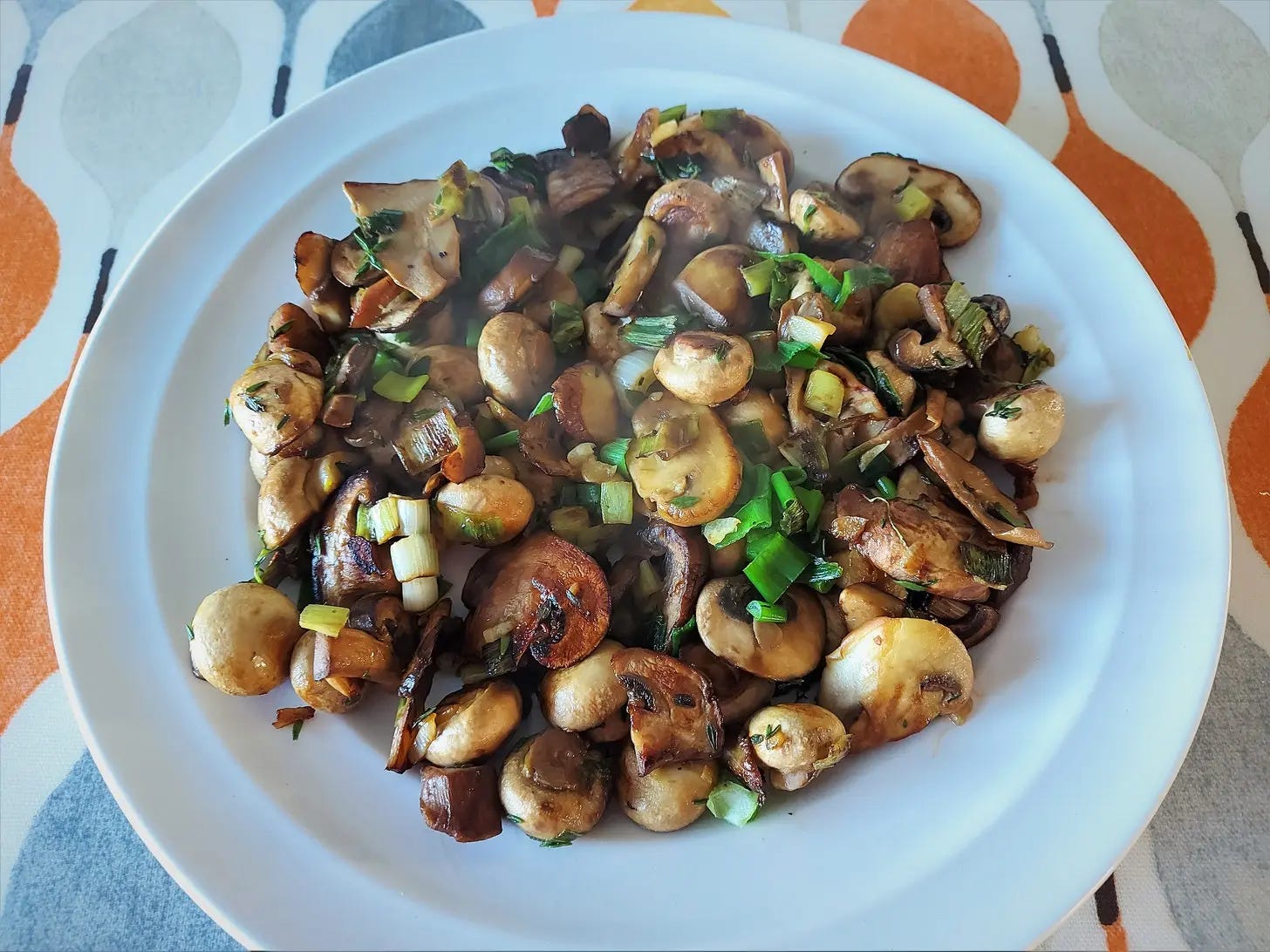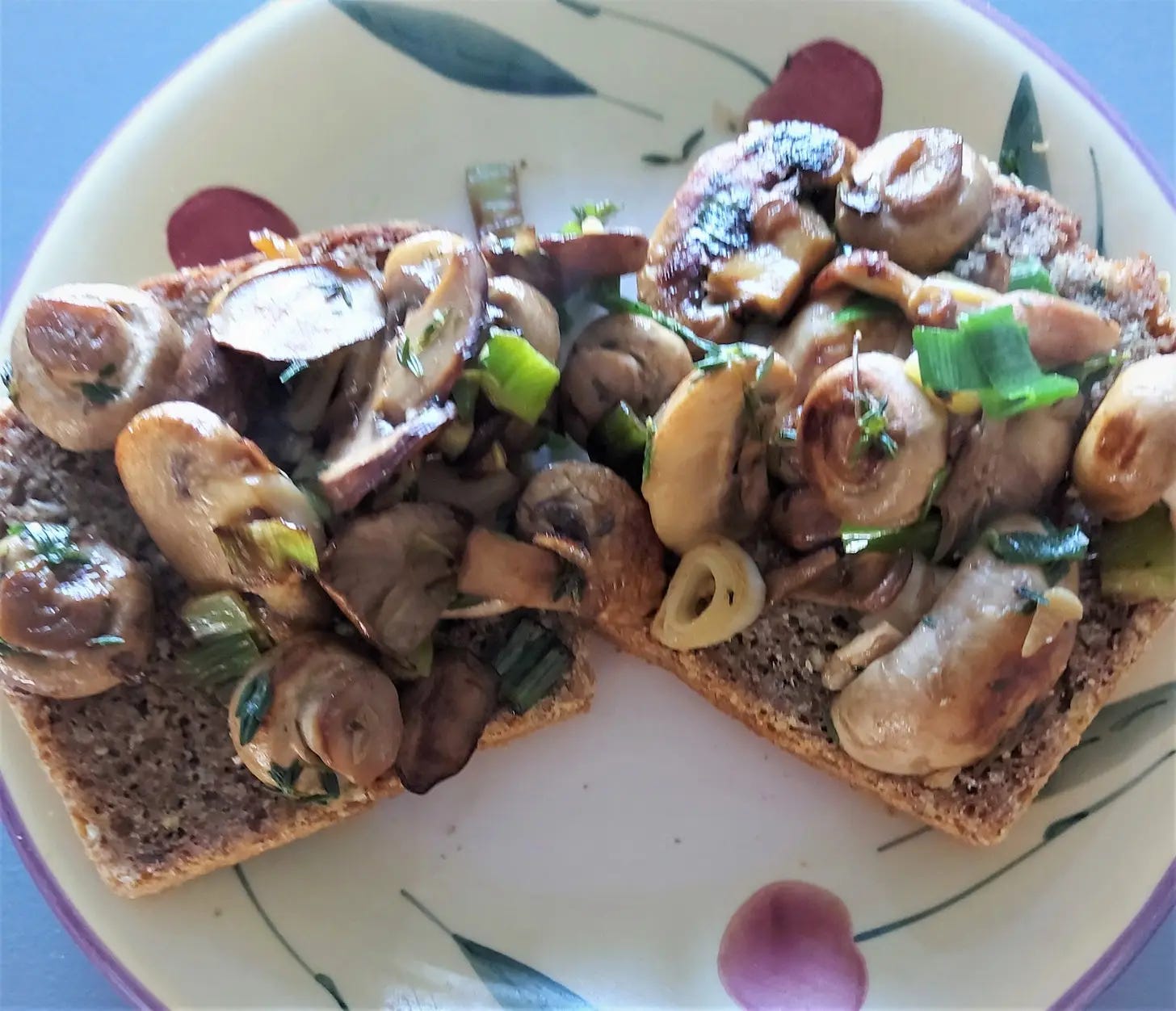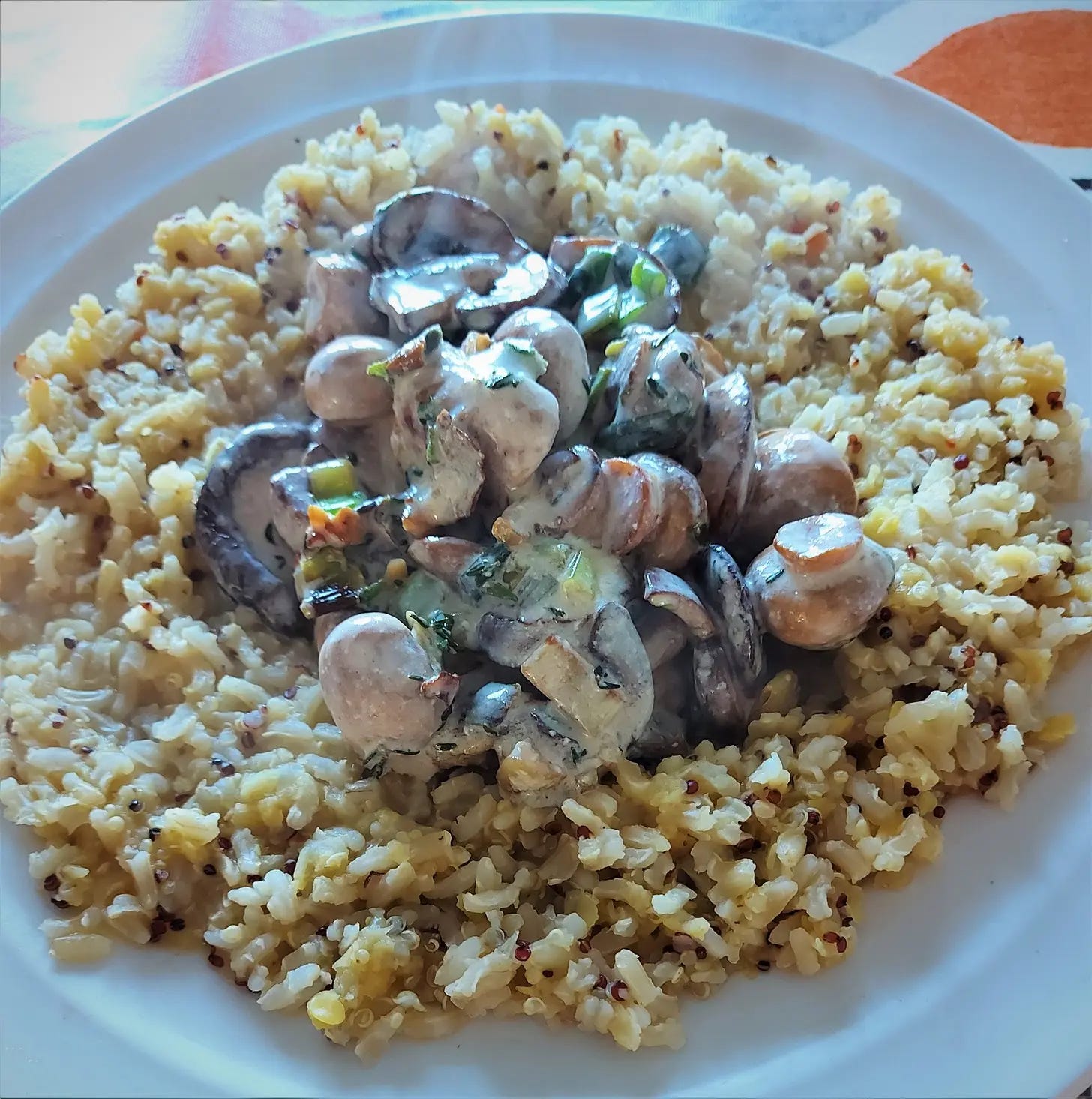Mushrooms at the top table
Mushrooms have been eaten and used medicinally for thousands of years. Ancient Greeks believed that mushrooms provided strength for warriors in battle, and the Romans perceived them as the “Food of the Gods.”
Although technically a fungus, mushrooms go under the vegetable classification for culinary purposes.
Products and Types
Mushrooms crop up everywhere from coffee to chocolate. You can buy them fresh, dried, powdered, or pickled.
The most commonly eaten mushrooms are white button, cremini and portobello. Although they look different, they are all the same mushroom. The only difference is age. White button is the youngest and portobello has been left to mature the longest.
According to The Guardian, the explosion of plant-based foods has caused sales of more exotic mushrooms to soar in recent years. As an example, Tesco reports that sales of King Oyster mushrooms increased by 240% in 2020. This is due to their meat-like qualities.


Benefits
Mushrooms are fat-free, low-sodium, low-calorie and cholesterol-free. They’re also packed with fibre, vitamins and minerals.
Nutritional benefits vary depending on the type of mushroom. The claim most frequently attached to mushrooms, for good reason, is that they support healthy immune function, and many have the potential to fight cancer.
Even the simple white mushroom beats more brightly coloured vegetables like carrots, peppers, tomatoes and courgettes as a source of antioxidants.
Most mushrooms are rich in copper and potassium (a portobello mushroom has more potassium than a small banana). They also have B vitamins such as niacin and riboflavin and are the only good plant source of vitamin D. Finally they have a powerful antioxidant called selenium which helps to support the immune system and prevent damage to cells and tissues.
Medical claims
Certain mushrooms have shown potential to protect against cancer.
Turkey tail mushrooms contain a compound called polysaccharide-K (PSK) that stimulates the immune system. PSK is so effective it has been approved as an anti-cancer prescription drug in Japan. There it’s known as Kawaratake and is given to all chemotherapy patients because the polysaccharides within it can, it is claimed, prevent cancer cell growth and reduce the side effects of chemotherapy and radiation.

In a 2018 study published in Behavioural Neurology, researchers found that Lion’s Mane mushrooms promote positive brain health by inducing nerve growth factor, which may help improve outcomes of ischemic stroke, Parkinson’s, Alzheimer’s and depression.
One study found that a substance in white button mushrooms may reduce the risk of breast cancer by reducing oestrogen levels in breast tissue. Another found that an extract of white button mushrooms reduced the growth of tumors in mice with breast cancer.
The U.S. Food and Drug Administration (FDA) recently approved a clinical trial for a turkey tail extract, allowing patients with advanced prostate cancer to take it, in combination with conventional chemotherapy.
Researchers at the University of Florida conducted a study in 2011 into the effects of shiitake mushrooms on the immune system. They gave participants a four-ounce serving each day for four weeks. Results showed reductions in inflammatory proteins and better-functioning T cells. Researchers concluded that regular mushroom consumption could enhance the immune system while reducing excessive inflammation.
Recipe
Below, you will find a recipe to boost your intake of mushrooms.
Sauteéd Mushrooms with Garlic, Onion & Thyme
Serves 4
Ingredients
1 pound/450g mushrooms
4 garlic cloves finely chopped
4 scallions/green onions finely chopped
2 tsp fresh thyme
2 tsp olive oil
Salt and pepper
2 tbs natural yogurt (optional)
Method
Chop the mushrooms evenly.
Heat the oil in a large pan until very hot and then add the mushrooms (Cook in batches if your pan is small).
Cook without moving for 2-3 minutes until mushrooms are brown on one side.
Add the garlic, scallions and thyme, stirring occasionally.
Cook for another 6-7 minutes until everything is golden brown.
Season with salt and pepper.
Stir in 2 tbs of natural yogurt (optional).
Notes
Instead of plain rice, I like to cook a mixture of brown rice, quinoa and lentils. It is a filling, nutritious and tasty alternative.














